Ryan Hall's Blog, page 274
March 28, 2016
NBC Releases TV Schedule of U.S. Olympic Track & Field Trials

Hayward Field. Photo: Kennett Mohrman
NBC announced today that it will present 76 hours of coverage from the 2016 U.S. Olympic Trials, including nearly 17 hours of track and field coverage beginning July 1st and running through July 10th.
The coverage of the track and field trials in Eugene, Ore., will be spread across NBC’s properties, including NBC, cable channel NBCSN and online via the NBC Sports Live Extra app. Much of the coverage will be in primetime.
For distance-running fans, NBC will televise the men’s 10,000m finals on July 1st at 9 p.m. ET, and the women’s 10,000m finals on July 2nd at 2 p.m. ET. The 5,000m and 1,500m races will also be televised. All of the NBC and NBCSN broadcasts will also be streamed live on the NBC Sports Live Extra app.
Here’s the schedule provided by NBC, though the network stressed that additional events may be covered as well. All times listed are Eastern:
July 1: Men’s shot put, men’s 10,000m finals (NBC, 9 p.m.)
July 2: Women’s 10,000m, women’s long jump, women’s discus (NBC, 2 p.m.)
July 2: Decathlon (NBCSN, 5 p.m.)
July 3: Men’s & women’s 100m and 400m finals (NBC, 7 p.m.)
July 4: Men’s & women’s 800m, men’s pole vault, men’s javelin (NBCSN, 7 p.m.)
July 7: Women’s steeplechase, women’s shot put, women’s triple jump (NBCSN, 8 p.m.)
July 8: Men’s 1,500m, Women’s 100m hurdles, men’s & women’s 400m hurdles semifinals (NBCSN, 6 p.m.)
July 8: Women’s 100m hurdles, men’s discus, men’s steeplechase finals (NBC, 8 p.m.)
July 9: Men’s 110m hurdles, men’s 200m, men’s 5000m, men’s triple jump (NBC, 8 p.m.)
July 10: Men’s & women’s 1,500m, women’s 200m, men’s and women’s 400m hurdles, men’s high jump (NBC, 7 p.m.)
The post NBC Releases TV Schedule of U.S. Olympic Track & Field Trials appeared first on Competitor.com.
Gear We Love: March 2016
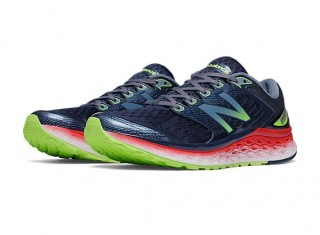
What are Competitor’s editors loving this month? Shorts, shoes, sports bras and more. Let’s take a look:
Photo Gallery
1 of {count}
Back to Start
View Larger Image
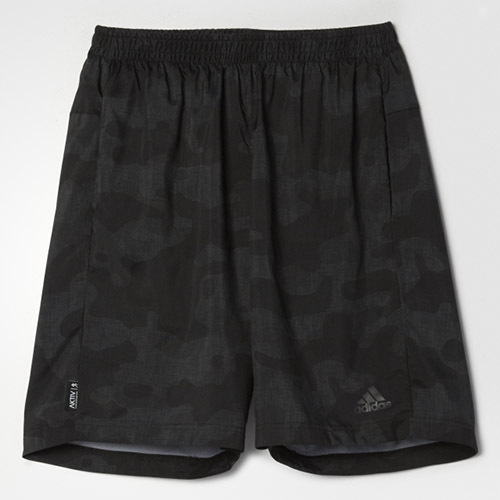
Adidas Aktiv Printed Short
"I like split shorts as much as the next runner, but general rules of decorum mean their usage—in my opinion at least—should probably be limited to time spent actually running. At the gym or while rehabbing or cross-training, more coverage is the way to go when you’re doing things like lying prone and lifting your legs, and also when faced with the unfortunate prospect of sitting on a warm, sweaty bench. Lots of apparel companies are making 9-inch-inseam or longer shorts, but I like these from Adidas. They’re incredibly comfortable and lightweight without seeming insubstantially wispy, the liner is soft, and the subtle black-on-black camo print is a nice touch. They of course perform great for running too, if running in long shorts is your thing." —Adam Elder, managing editor ($45)
View Larger Image
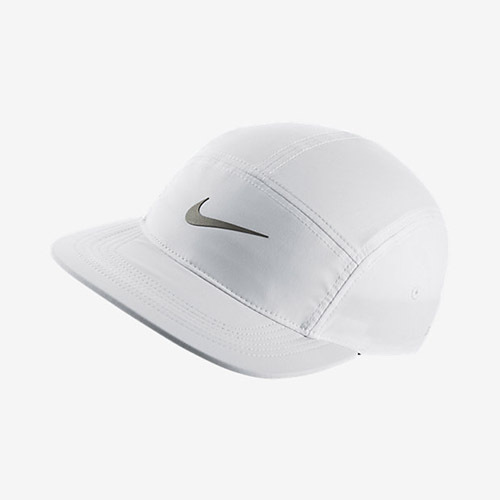
Nike AW84 Running Hat
"It’s rare when my head isn’t covered on the run and the Nike AW84 has been my go-to lid lately. It super comfortable, breathable and stylish. It fits snug, but not too tight, and I like the 5-panel design and shorter-than-I’m-used-to brim." —Mario Fraioli, senior editor ($26)
Related Galleries

Gear We Love: February 2016

Gear We Love: January 2016

Gear We Love: December 2015
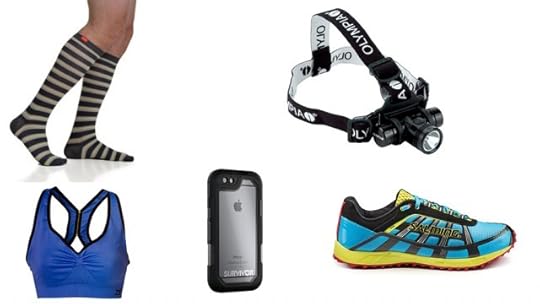
Gear We Love: November 2015

More Galleries
The post Gear We Love: March 2016 appeared first on Competitor.com.
March 27, 2016
Photos: 2016 IAAF World Half-Marathon Championships
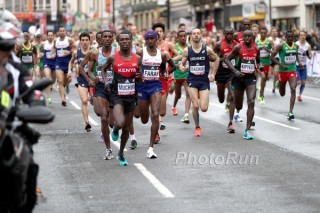
An exciting day of racing in Cardiff, Wales, determined the world champions in the half marathon.
In the end, Geoffrey Kamworor and Peres Jepchirchir of Kenya were the individual winners, with Kenya winning both team titles as well. Kamwororo’s victory in 59:10 was even more impressive considering a start-line tumble and huge wind gusts and rain in the final kilometers.
RELATED: Kamworor Overcomes Fall to Dominate World Half-Marathon Championships
Here are photos from the race, taken by PhotoRun.net:
Photo Gallery
1 of {count}
Back to Start
View Larger Image

2016 World Half Marathon Championships
View Larger Image

2016 World Half Marathon Championships
View Larger Image

2016 World Half Marathon Championships
View Larger Image

2016 World Half Marathon Championships
View Larger Image

2016 World Half Marathon Championships
All eyes were on Mo Farah.
View Larger Image

2016 World Half Marathon Championships
Scott Bauhs of the United States.
View Larger Image

2016 World Half Marathon Championships
View Larger Image

2016 World Half Marathon Championships
View Larger Image

2016 World Half Marathon Championships
View Larger Image

2016 World Half Marathon Championships
View Larger Image

2016 World Half Marathon Championships
View Larger Image

2016 World Half Marathon Championships
View Larger Image

2016 World Half Marathon Championships
View Larger Image

2016 World Half Marathon Championships
View Larger Image

2016 World Half Marathon Championships
View Larger Image

2016 World Half Marathon Championships
Jared Ward, who will represent the U.S. at the Olympics in the marathon, finished in 1:04:05.
View Larger Image

2016 World Half Marathon Championships
View Larger Image

2016 World Half Marathon Championships
View Larger Image

2016 World Half Marathon Championships
View Larger Image

2016 World Half Marathon Championships
Jepchirchir won in 1:07:31.
View Larger Image

2016 World Half Marathon Championships
View Larger Image

2016 World Half Marathon Championships
View Larger Image

2016 World Half Marathon Championships
Tim Ritchie was the top American, finished 23rd in 1:03:49.
View Larger Image

2016 World Half Marathon Championships
View Larger Image

2016 World Half Marathon Championships
View Larger Image

2016 World Half Marathon Championships
Kamworor won in 59:10.
View Larger Image

2016 World Half Marathon Championships
View Larger Image

2016 World Half Marathon Championships
Bedan Karoki finished second in 59:36.
View Larger Image

2016 World Half Marathon Championships
View Larger Image

2016 World Half Marathon Championships
In a sprint finish, Mo Farah finished in 59:59 and took third.
View Larger Image

2016 World Half Marathon Championships
Related Galleries

Photos: 2016 Rock ‘n’ Roll Mexico City
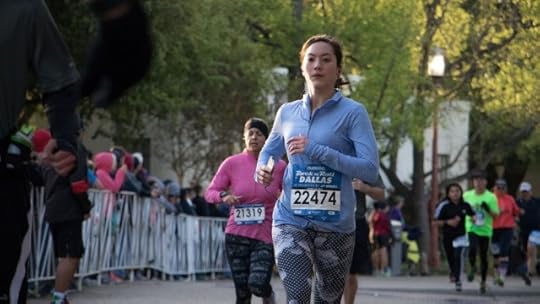
Runners Rock the ‘Big D’

Photos: 2016 Humana Rock ‘n’ Roll New Orleans
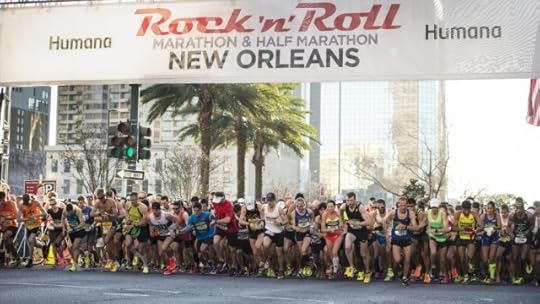
Runners Rock the Big Easy

More Galleries
The post Photos: 2016 IAAF World Half-Marathon Championships appeared first on Competitor.com.
March 26, 2016
Kamworor Overcomes Fall to Dominate World Half-Marathon Championship
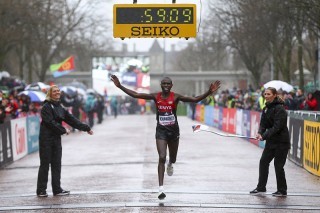
Geoffrey Kamworor if Kenya wins the 2016 IAAF World Half-Marathon Championships in Cardiff, Wales (photo by Getty Images for IAAF)
(c) 2016 Race Results Weekly, all rights reserved. Used with permission.
CARDIFF, Wales — Just as the starter’s pistol fired for men’s race at today’s 22nd IAAF World Half-Marathon Championships here in the Welsh capital, defending champion Geoffrey Kamworor found himself in the worst possible position: face down on the pavement.
The 23-year-old Kenyan, who won these championships in 2014 in Copenhagen, had shifted his weight just as the initial surge of the pack pushed him from behind and pitched him violently forward. He desperately worked to regain his feet as his chief rival, Britain’s Mo Farah, spurted away.
“It’s unfortunate that I fell down at the start,” a composed Kamworor later told the media. He continued, shaking his head: “People were coming from behind and pushing me down.”
Remarkably, Kamworor not only got back on his feet, but the 2015 World Championships 10,000m silver medalist would eventually overwhelm a top-notch field and win his second world road running title in 59:10, a remarkable time considering not only the fall but the cold, windy and rainy conditions which included a downpour in the final 5K of the race.
“I never give up,” Kamworor told reporters.
Indeed. By the 5K mark, Kamworor was already in the lead pack where his teammate, Bedan Karoki, was controlling the pace. The 5K split was honest (14:10) and 13 men were still in contention, including Farah, who was competing at these championships for the first time.
But “honest” wasn’t fast enough for Karoki. With Kamworor latched on, Karoki blew through the second 5K in a blistering 13:48 (27:59). Farah checked the time and wasn’t quite sure what to make of the pace. Would they just blow up later?
“It was an incredible pace,” Farah told reporters after the race. He continued: “Three or four miles into the race they were at the front controlling it. Karoki was pushing and pushing.”
As the rain intensified, Karoki and Kamworor upped the tempo another notch. They ran the next 5K in 13:42, putting five seconds on their nearest chaser, Tamrat Tola of Ethiopia. Farah was back in sixth place, 22 seconds behind the leaders. He knew that gold or silver was now out of the question, but steeled himself to fight for bronze.
“I’ll just work my way through,” Farah said he told himself. “Don’t let that gap get bigger.”
With a final surge before the 20K mark, Kamworor dropped Karoki and put the race out of reach. Karoki—who was clearly exhausted and had looked behind himself a few times—held on for second in 59:36. That’s the same position he finished behind Kamworor at the IAAF World Cross Country Championships last year in China.
Behind them, Farah was in a mighty fight for both personal and British pride. Coming into the homestretch he launched his world-beating sprint, trying to dispatch Ethiopia’s Abayneh Ayele. But the African fought him tooth and nail, staying right on Farah’s heels all the way to the line. Farah got bronze by a step over Ayele; both men were given the same time: 59:59.
“I’m definitely a bit disappointed to be honest with you,” said Farah who set a European record of 42:04 at the 15K point. “That’s who I am.”
The Kenyans won the team title with a total time of 2:58:58 for their top-3 runners, with the Ethiopians second in 3:01:16 and Eritrea third in 3:06:18. Those were the same three teams which made the podium in 2014, except in a different order (Eritrea, Kenya and Ethiopia).
The American team finished sixth, led by Tim Ritchie (23rd, 1:03:49) and Jared Ward (26th, 1:04:05).
Jipchirchir Upsets Kenyan Teammates to Take Women’s Title
In the women’s contest, there was no doubt that the five-strong Kenyan team was the best on the field of play. Led by Mary Wacera, the silver medalist from these championships in 2014, Team Kenya led right from the starter’s gun, completely controlling the race.
By the 15K mark (48:14) only one Kenyan, Pascalia Kipkoech, had fallen off the pace. Two Ethiopians, Netsanet Gudeta and Ganet Yalew, managed to hold the tempo with Wacera, and her Kenyan compatriots Peres Jepchirchir, Cynthia Limo, and Gladys Cheshire. They would soon find the pace, rain and cold too tough, especially with the modest hills near the end.
“It was difficult,” Jepchirchir said. “The last two kilometers it was climbing the hill. Yeah, it was cold.”
Running 15:59 from 15 to 20K, Jepchirchir and Limo broke up the pack, sending Wacera back to third where she would finish in 1:07:54. The two Kenyans ran side by side right to the finish straight where Jepchirchir, the youngest member of the Kenyan squad at just 22, won in the final sprint over Limo, 1:07:31 to 1:07:34.
“I was happy to come first,” said Jepchirchir, who thought the course was more difficult than advertised. “It was not flat.”
Limo, who could barely stand after crossing the line, was satisfied with her silver medal, especially since her team had swept the podium and won the team title for the second consecutive championships.
“Yes, I was second,” Limo told Race Results Weekly. “It wasn’t easy because it was windy and cold and there were a lot of slopes. And you know, because of the rain, it made our muscles to be so tired. And it was struggling, struggling to get to the finish.”
Ethiopia took a distant second in the team competition with a total time of 3:26:29. A young Japanese team was third (3:32:25).
It was not a great day for the American team. Their highest finisher on the day was Janet Bawcom who took 11th in the women’s race. Like seven other members of the USA team, she had run the USA Olympic Trials Marathon on February 13, and still felt fatigued.
“The course was pretty good, except for the spots which were so open,” Bawcom told Race Results Weekly. “Not a lot of people. So, it was a little rough. I think the worst part was the last, probably, three miles when we were all spread out and you were just fighting for every second by yourself.”
The next edition of the IAAF World Half-Marathon Championships will take place in Valencia in 2018.
The post Kamworor Overcomes Fall to Dominate World Half-Marathon Championship appeared first on Competitor.com.
March 25, 2016
Video: Sprint King Usain Bolt Talks About His Future
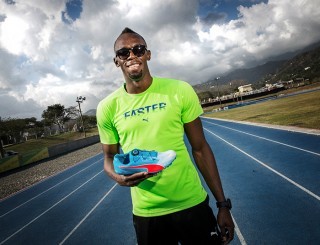
In a Q&A with the media last weekend in Kingston, Jamaica, six-time Olympic champion sprinter Usain Bolt, 29, said he’d like to run sub-19 seconds for the 200 meters and sub-45 seconds for 400m this year and that he’d likely continue his career beyond the 2016 Olympics this summer in Rio—maybe through 2017, but definitely not through the 2020 Games in Tokyo. See what else the world’s fastest man—who owns world record in the 100-meter dash (9.58 seconds), as well as the 200m (19.19) and the 4x100m relay (36.84)—had to say in this interview.
RELATED: Puma Relaunches Its Innovative Disc Closure System
The post Video: Sprint King Usain Bolt Talks About His Future appeared first on Competitor.com.
Puma Re-Launches Its Innovative Disc Closure System
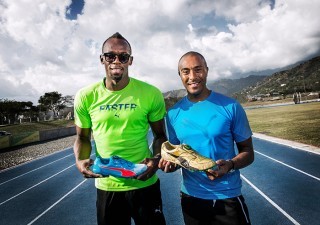
Puma unveiled the latest version of its Disc dial lacing closure system last week in Kingston, Jamaica. Although the Disc closure system debuted in 1991 in running shoes, it eventually became more associated with some of Puma’s lifestyle shoes. The newly re-launched version, which is lighter and provides a better fit than previous versions, is all about high-end running performance, available in both the IGNITE Disc ($130) training shoe and the EvoSpeed Disc Spike ($120) that world-record-setting sprinter Usain Bolt will wear as he prepares for and races in this summer’s Olympics in Rio de Janeiro. The updated Disc system consists of an internal wire lacing mechanism that quickly and uniformly snugs down the upper around the foot with a twist of a small plastic dial at the top of the foot in front of the ankle. We’ve tested out on both shoes and we think the secure, wrap-like fit is sublime. (The Disc system is similar to the BOA closure system that has been used on a variety of types of footwear, from trail running shoe to snowboard boots to cycling shoes.)
Photo Gallery
1 of {count}
Back to Start
View Larger Image

Puma Disc System Re-Launch
The IGNITE Disc shoe is an updated version of the energetic neutral training shoe Puma released in 2015. A men's size 9.0 weighs about 11.0 oz.
View Larger Image

Puma Disc System Re-Launch
Sprint king Usain Bolt (left) and Colin Jackson, the 1993 world champion in the 110-meter high hurdles, show off the new and old version of Puma's competition spikes with Disc dial lacing technology.
View Larger Image

Puma Disc System Re-Launch
The Disc System Runner, Puma's original training shoe with Disc technology, debuted in 1991.
View Larger Image

Puma Disc System Re-Launch
Colin Jackson takes a look at one of the vintage Puma shoes with Disc technology. Jackson, the former world-record holder in the 110-meter high hurdles, was one of several top-tier stars who compete in Puma Disc spikes in the 1990s.
View Larger Image

Puma Disc System Re-Launch
The IGNITE Disc is a lightweight, low-slung neutral cushioned trainer with a 12mm heel-toe offset.
View Larger Image

Puma Disc System Re-Launch
The Disc system pulls the wire laces in from all directions of the top of the foot equally, creating a snug, wrap-like fit without gaps or high-tension zones that can cause irritation.
View Larger Image

Puma Disc System Re-Launch
The evoSpeed Disc Spike has already seen action in the IAAF World Indoor Championships in Portland, Ore., and the Boys & Girls Championships in Kingston, Jamaica.
View Larger Image

Puma Disc System Re-Launch
Bolt raved about the new Disc system and the new shoes at a press conference at the University of the West Indies. He says he wants to run sub-19 seconds in the 200 meters this summer.
View Larger Image

Puma Disc System Re-Launch
The IGNITE Disc is one of Bolt's go-to shoes for training.
View Larger Image

Puma Disc System Re-Launch
In addition to the responsive polyurethane foam midsole, the IGNITE Disc has a new stretchy mesh upper that helps provide a secure fit to various foot sizes and shapes without sacrificing comfort or breathability.
View Larger Image

Puma Disc System Re-Launch
A glance at the old-school version of the Puma Disc System Runner from 1991 and the new Puma IGNITE Disc training shoes launched this week online and will hit retail stores by April 1.
Related Galleries

Shoe Of The Day: Puma Faas 800

Shoe Of The Day: Puma Faas 250 TR

Sports Bras for Women—Science, Fit, and “Feel”

More Galleries
The post Puma Re-Launches Its Innovative Disc Closure System appeared first on Competitor.com.
Neely Spence Gracey Takes on Boston in Marathon Debut
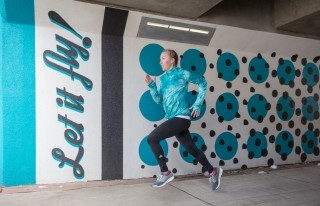
Photo: David Bracetty
Sitting beneath a bridge on Figueroa Street watching the country’s best distance runners struggle through the heat at the 2016 U.S. Olympic Trials Marathon in Los Angeles on Feb. 13, Neely Spence Gracey knew her decision to forgo the race in favor of making her long-awaited marathon debut on April 18 in Boston was the correct one.
“I kept waiting for the pang of regret, and it never came,” Gracey says. “My preparation would have been very rushed, and I may or may not have made it there healthy.”
Gracey is healthy now, and after winning the Rock ‘n’ Roll New Orleans Half Marathon in 1:14:20 on Feb. 28, she’ll be the top American entrant in the 120th running of the Boston Marathon. In her most recent tune-up race, she placed 10th in the NYC Half Marathon (1:13:17) on March 20.
Although she’s only 25, running fans have been waiting to see what she might be able to do in the marathon for a long time. The daughter of 1991 world championships bronze medalist Steve Spence, Gracey was a child prodigy, a high school standout and an NCAA Division II record-breaker at Shippensburg University of Pennsylvania under the coaching guidance of her dad.
While she excelled in cross country and in the 5,000 and 10,000 meters on the track, she turned pro in 2012 with an eye on eventually running the marathon. After battling a few minor injuries in the past couple of years, she ran a breakthrough race at the Rock ’n’ Roll Philadelphia Half Marathon on Oct. 31. She placed second in the women’s race in 1:09:58, becoming only the 10th American woman to break 1:10.
Given that the top five finishers at the Olympic Trials are all in their 30s, Gracey could be one of the faces of the next generation of U.S. marathoners by the time the 2020 U.S. Olympic Trials are here—along with Kellyn Taylor, 29, Alia Gray, 27, Maegan Krifichin, 27, and Katja Goldring, 25.
“I grew up knowing that being a professional runner was an option,” Gracey says. “Until I was 7, we’d come out to Boulder for my dad’s training every summer. I did not know everyone didn’t do that—that kids don’t go to Colorado for their dad’s altitude training.”
Gracey grew up as an “active kid,” but was more interested in theater and horseback riding than running. That all changed when she ran a 17:40 5K as an eighth-grader, just six months after starting running.
“I think I had that natural ability, and I was raised with the distance running mentality my whole life,” she says. “Don’t get me wrong, I worked hard to improve in high school, but the love of running was innate.”
Although she is coached by her husband, Dillon, and Steve Magness, the University of Houston cross country coach and author of “The Science of Running,” Gracey says her dad is still one of her key advisers and mentors—especially when it comes to racing strategy and big running-related decisions.
Gracey, who will turn 26 two days before the Boston Marathon, knows she’ll face a deep field there—including London Olympic gold medalist Tiki Gelana of Ethiopia and defending champion Caroline Rotich of Kenya—but she’s not planning to go out with the leaders at a 2:22 pace. She knows the hills will make it a tough course to debut on.
As a 2-year-old, Gracey was there when her dad won the 1992 U.S. Olympic Trials in Columbus, Ohio, earning a chance to run the marathon in the Barcelona Olympics (where he placed 12th). After winning the Trials, Steve crowned Neely with his victor’s laurel wreath. But, she points out, Boston has an even deeper connection for her.
“Every year, I hear the story that I was born while my Dad was running the Boston Marathon in 1990,” Gracey says. “When I knew I couldn’t run in the Olympic Trials this year, the next thing was Boston, and it just fell into place and it seems like a perfect fit.”
The post Neely Spence Gracey Takes on Boston in Marathon Debut appeared first on Competitor.com.
Should You Lose Weight and Train for a Race at the Same Time?
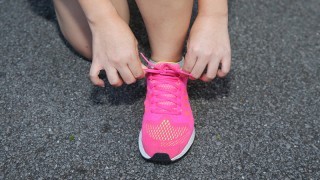
Runners have long enjoyed the weight loss benefits of our great sport. It seems like every week there are new studies confirming that running is a good way to help lose weight:
Aerobic exercise is more efficient at burning liver and visceral fat than resistance training (source 1 and source 2)
Running is better than resistance training for weight loss (source)
So if you’d like to lose weight, then running is one of the best forms of exercise to help you accomplish all of your goals.
But there’s a difference between running to lose weight and training for a race.
Because when you’re training, you’re not simply exercising. The goal of training is to physically prepare a runner to complete a race at a particular pace.
For example, you may want to finally break 25 minutes in the 5K. To do so, you must train strategically rather than simply exercise generally.
And many runners encounter problems when they try to do both: train for a race and lose weight. When cutting calories is combined with higher mileage and more demanding workouts, the result is almost always sluggishness, poor performance, and a higher risk of running injuries.
“If you diet while training [for a race], you won’t perform at your best because you won’t be able to adequately repair your muscles after workouts,” says Anne Mauney, MPH, RD, the author of the food and fitness blog fANNEtastic food and marathon runner. “If taken too far, under-fueling while training can lead to more serious issues like stress fractures or electrolyte imbalances.”
The solution is to focus on weight loss before you start training for a race. During this 4-8 week period, the focus is on losing weight rather than running performance.
And since most weight loss occurs from dietary changes rather than exercise, it’s best to follow several best-practices.
Fill Up on Protein!
Many studies have confirmed that protein helps with satiety (the feeling of being full) and curbing appetite—especially when it’s consumed at breakfast, which has the added benefit of reducing cravings for unhealthy foods.
Runners should aim to eat about .5–1 gram of protein for every pound of bodyweight depending on mileage and overall workload. The best sources include lean meats and fish like chicken breasts, turkey, salmon, sardines, and plant-based foods like legumes, nuts, and seeds.
With adequate protein, your muscles will be able to properly recover and rebuild after a challenging run. It’s an essential building block for bones, muscle, and even hair, cartilage, and skin.
Don’t Drink Your Calories
It’s hard enough to lose weight, don’t sabotage your efforts by drinking hundreds of calories from sweetened beverages like soda, iced tea and juice!
Instead, choose water. It has zero calories and helps keep you full. People often mistake thirst signals for hunger so ensuring you’re properly hydrated is an important piece to the weight loss puzzle.
And yes, we know that sports drinks help improve performance. But they’re not appropriate during a weight loss phase of training (when the focus is not on performance) due to the amount of sugar they contain.
Stick with water for the vast majority of your fluids. Other great options are unsweetened tea, coffee, and other unsweetened beverages.
It’s All About Nutrient Density
This one component to your weight loss efforts may be the most important. A groundbreaking study from the Nutrition Journal found that a nutrient-dense diet lessens hunger and is an effective way for improving health and losing weight.
In other words, you’re better off eating a nutritious, protein-packed breakfast than a nutrient-poor bowl of sugary cereal.
Focus on nutrient-dense but calorie-poor foods like bright vegetables, leafy greens, and lean meats. Fruit, high-quality sources of carbohydrate like quinoa or wild rice, and beans are other great options that are rich in nutrients but don’t pack the calorie-punch of sweetened, processed foods.
When your goal is weight loss, it’s helpful to prepare these nutritious foods ahead of time so you’re not scrambling to find healthy food after a long run or difficult workout. Those are the moments when you’ll be most tempted by calorie-dense (and nutrient-poor) foods.
Your biggest results will come from this simple approach. There’s no need to calculate macronutrient percentages or “score” your food.
And certainly no need for calorie counting!
Like periodizing your training for a big race, it’s also critical to periodize the goals of your training. Whether that’s weight loss, a 5K PR, or qualifying for Boston, it’s necessary to focus on one thing at a time.
First, focus on weight loss. Then, you can focus on racing fast.
* * *
About the Author:
Jason Fitzgerald is the head coach at Strength Running, one of the web’s largest coaching sites for runners. He is a 2:39 marathoner, USATF-certified coach and his passion is helping runners set monster personal bests. Follow him on Twitter @JasonFitz1 and Facebook.
The post Should You Lose Weight and Train for a Race at the Same Time? appeared first on Competitor.com.
Bernard Lagat, Meseret Defar Headline Carlsbad 5000 Elite Field
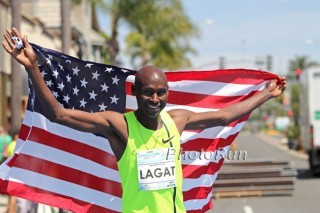
Bernard Lagat set a masters world record for 5K road racing in Carlsbad earlier this year, finishing third in 13:40. Photo: PhotoRun.net
Bernard Lagat is shooting for his fifth Olympic team in 2016. His journey will go through Carlsbad, Calif.
The 41-year-old American will race in the Carlsbad 5000 on April 3rd, a place he’s had plenty of success at in recent years. He set a world record for the fastest 5K by a Masters runner last year, finishing third in 13:40. He ran a 13:19 in 2014 before he was a Masters runner.
Lagat’s competition will include last year’s winner, 24-year-old Lawi Lalang of Kenya, along with Will Leer of the U.S., Andy Vernon of Great Britain and Collis Birmingham of Australia.
In the women’s race, a legend of the Carlsbad 5000 is back to write another chapter. Meseret Defar of Ethiopia has won three Carlsbad 5000s, and set the road 5K world record at Carlsbad in 2006, clocking a 14:46. After Carlsbad, the 32-year-old will turn her attention to the Olympic Games, where she will try to defend her London gold medal in the 5000m.
The 31st annual Carlsbad 5000 will be a full weekend of running in the coastal community of north San Diego County. Saturday’s racing will include kids races along with a competitive 1-mile race with $3,000 in prize money, before the 5K on Sunday.
RELATED: Carlsbad 5000 Medals Through the Years
The post Bernard Lagat, Meseret Defar Headline Carlsbad 5000 Elite Field appeared first on Competitor.com.
March 24, 2016
U.S. Olympic Marathon Team Will Put Their Fastball to the Test
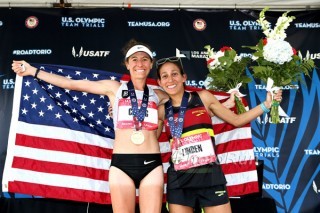
Amy Cragg and Desiree Linden (pictured) along with Shalane Flanagan and Meb Keflezighi will be in Boston for the Boston Marathon.
OK, so they can run marathons really fast. But can they pitch?
We will find out on April 16. That’s when Amy Cragg, Desiree Linden, Shalane Flanagan and Meb Keflezighi will all throw out the first pitch at the Boston Red Sox game at Fenway Park. The Boston Marathon is two days later.
The four were named Elite Athlete Ambassadors for the 2016 Boston Marathon. Coming off a successful day at the U.S. Olympic Trials and with the 2016 Rio Olympics this summer, none are running the Boston Marathon this year. Instead, they will join a big-name list of ambassadors that includes Bill Rodgers, Joan Benoit Samuelson, Bobbi Gibb, Greg Meyer, Ryan Hall, Uta Pippig and more. The ambassadors will be in Boston for marathon weekend, attending media and community events, appearing at the expo and doing meet and greets.
The news of the first pitch was met with excitement from Flanagan and Linden, who chattered about it on social media Thursday.
Terrified that this wonderful dream may actually come true!! @HastyHastings @des_linden time to start practicing https://t.co/gVmgy6LEC6
— Shalane Flanagan (@ShalaneFlanagan) March 24, 2016
So good, SO Good, SO … *updates resume* Starting pitcher for the Boston @RedSox https://t.co/kbzFaMXudl — des_linden (@des_linden) March 24, 2016
Keflezighi is no stranger to throwing out the first pitch. He threw out the first pitch just a few days after winning the 2014 Boston Marathon at Fenway Park, and has thrown the first pitch at games in Los Angeles, San Diego and St. Louis as well.
Here’s his Fenway Park first pitch from 2014:
The post U.S. Olympic Marathon Team Will Put Their Fastball to the Test appeared first on Competitor.com.
Ryan Hall's Blog
- Ryan Hall's profile
- 21 followers



